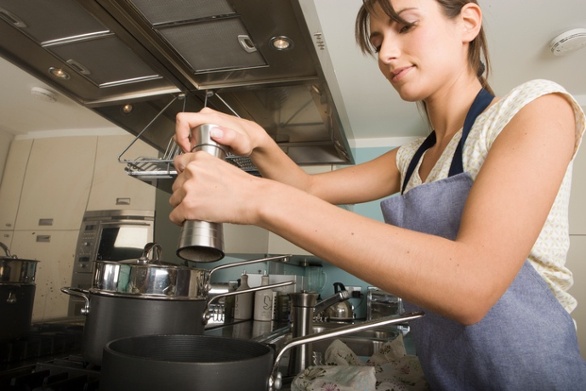In some instances, appliances will go past their useful lives and stop working properly. Food can get spoiled, and energy can be wasted. In other instances, new technologies will emerge, resulting in considerably more powerful and energy-efficient refrigerators, stoves and grills.
To retain competitive advantage, keep the costs of business down and continue serving customers delectable dishes, from time to time restaurant owners will have to buy new equipment—it’s as simple as that. Unfortunately, cash can be a problem. You can’t exactly spring for a brand-new refrigerator if it means you’ll be unable to pay your bills for the next two months.
Luckily, there are a number of options restaurant owners can pursue to secure new equipment. Here are four of them:
1. Traditional Small Business Loans
Usually obtained through a brand-name financial institution or an organization like the Small Business Administration, traditional small business loans are tricky to secure during what’s often a time-consuming process. In fact, only half of small businesses that applied for financing through these kinds of institutions during the first half of 2014 received any funds. Those aren’t great odds by any stretch of the imagination. Couple that with the fact that you are unlikely to see any money for 30 to 60 days even if you are approved, and it quickly becomes apparent you’re probably better off looking for financing elsewhere.
2. Unsecured Small Business Loans
Instead of filling out tons of paperwork for a loan they very well might not get, many restaurant owners are turning to unsecured small business loans instead. Unlike traditional bank loans, business owners don’t have to put up any collateral or offer a personal guarantee to receive these kinds of loans. It doesn’t even matter if a business owner has bad credit, either. Financing is based on how well your restaurant is performing. There’s minimal paperwork required, and money is deposited into your account within a few business days. Thanks to consumer comparison services, you are able to browse a slew of alternative lenders in a matter of minutes. This gives you the peace of mind that comes with knowing you’re getting the best deal for your specific situation.
3. Business Cash Advances
Need new equipment ahead of one of your restaurant’s busier seasons? You can also trybusiness cash advances. Essentially, this method of financing involves selling a percentage of your future credit card receipts to a lender in exchange for a loan. The good part about the arrangement is you’re only on the hook for a percentage of receipts—not a fixed amount of money. If business is slow, you just pay a percentage. But there’s a bad part, too: You’ll also have to pay back a fee, which could get incredibly hefty, ranging anywhere from 15% to 80% APR. So do your due diligence before choosing this option. Make sure it makes sense.
4. Business Lines of Credit
If you need to get new equipment for your restaurant, you could always open up a line of credit for your business—think of it as a credit card for your business. Generally speaking, business lines of credit hover somewhere between $5,000 and $50,000. Depending on the kind of equipment you need, you’ll likely be able to finance something on your card. Keep in mind that it’s considerably easier to get a business line of credit compared to a traditional small business loan issued by a bank. As an added bonus, some cards also have rewards programs, so you can save a little bit of money on the backend. Doesn’t sound too bad, does it?
Now that you know some of the financing options at your disposal, it’s time to do a little bit of research to determine which small business loan makes the most sense for your restaurant. The good news is it’s easier than ever to do that thanks to consumer comparison services that allow restaurant owners to shop a wide variety of lenders at once, enabling them to easily determine which one is offering the most agreeable terms. Good luck!











